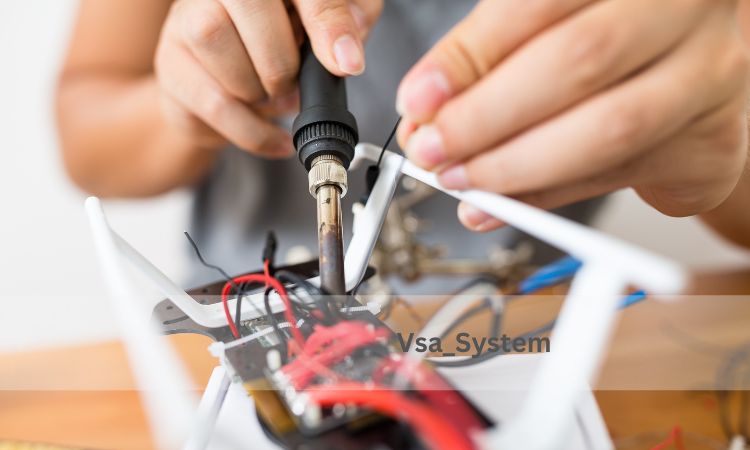Garage workshop lighting
Choosing the Best Lighting for Your Garage Workshop
When it comes to setting up a functional and well-lit workspace in your garage, selecting the right lighting is crucial. Not only does good lighting enhance visibility and safety, but it can also improve productivity and overall work quality. In this guide, we will explore cost-effective and energy-efficient options for garage workshop lighting to help you create an ideal working environment.
Assessing Your Workshop Needs
Before diving into the various lighting options available, it’s essential to assess your workshop needs. Consider the following factors:
- Workspace Size: Determine how much lighting coverage you require based on the size of your garage workshop. Larger spaces may require more luminosity to ensure even illumination.
- Task Requirements: Identify the specific tasks performed in your workshop. Some activities, such as woodworking or detailing cars, may require higher levels of illumination to ensure precision and accuracy.
- Safety Concerns: Evaluate potential safety hazards in your workshop, such as sharp tools or machinery. Adequate lighting can help minimize accidents and improve overall workshop safety.
- Energy Efficiency: Consider the environmental impact and energy costs associated with different lighting options. Energy-efficient lighting not only reduces your carbon footprint but also saves you money in the long run.
Energy-Efficient Garage Workshop Lighting Options
When it comes to energy efficiency, LED lighting stands out as a cost-effective and environmentally friendly choice. LEDs (Light-Emitting Diodes) consume significantly less energy compared to traditional incandescent bulbs, making them an ideal solution for garage workshop lighting. Here are some energy-efficient options worth considering:
- LED Shop Lights: LED shop lights are versatile lighting fixtures designed specifically for workshops and garage spaces. They provide bright, uniform illumination and typically have a long lifespan. Look for shop lights with adjustable brightness settings to customize the lighting intensity to your specific needs.
- LED Strip Lights: LED strip lights are a flexible and easy-to-install option that can be placed horizontally or vertically around your workspace. These lights offer excellent visibility and can be easily customized to fit any size or layout of your garage workshop.
- LED Bulbs and Fixtures: If you already have existing fixtures in your garage, consider swapping out traditional incandescent or fluorescent bulbs with LED equivalents. LED bulbs are energy-efficient, last longer, and emit less heat, making them a safer and more cost-effective lighting solution.
- Motion-Activated Lighting: To further enhance energy efficiency in your workshop, consider installing motion-activated LED lights. These lights automatically turn on when someone enters the workspace and turn off when no movement is detected, ensuring optimal energy consumption.
Designing an Effective Lighting Layout
In addition to selecting energy-efficient lighting options, designing an effective lighting layout is crucial for maximizing visibility and reducing shadows in your garage workshop. Consider the following tips:
- Even Distribution: Aim for even distribution of light throughout your workspace to minimize dark spots and shadows. Consider using multiple light sources strategically placed to achieve balanced illumination.
- Task Lighting: Install task lighting directly above workbenches or specific work areas to provide focused lighting where it is needed the most. Adjustable desk lamps or under-cabinet LED lights can be excellent options for task lighting.
- Overhead Lighting: Supplement the task lighting with overhead lighting fixtures, such as LED shop lights, to provide general illumination for the entire workspace. Ensure that the fixtures are positioned to minimize glare and provide uniform lighting.
- Natural Light: If possible, take advantage of natural lighting by incorporating windows or skylights into your garage workshop design. Natural light not only improves visibility but also enhances the overall ambiance of the space.
Factors to Consider in the Decision-Making Process
Choosing the best lighting for your garage workshop requires careful consideration of various factors. Let’s delve into some additional details that should be taken into account during the decision-making process:
1. Color Temperature
Color temperature refers to the appearance of light, ranging from warm tones to cool, white hues. It is measured in Kelvin (K). Different tasks and activities may benefit from specific color temperatures:
- Warm White (2700K-3000K): If you use your garage as a place to relax or socialize in addition to working, warm white lighting can create a cozy and inviting atmosphere. However, keep in mind that warm white lights might sacrifice some visibility and may not be ideal for intricate tasks.
- Cool White (4000K-5000K): For garage workshops primarily used for detailed tasks or projects, cool white lighting offers a crisp and bright illumination, allowing for better visibility and accuracy. This color temperature promotes focus and is commonly preferred by professionals working with tools and machinery.
2. Lighting Control Options
Consider the flexibility and control options available with your chosen lighting solution:
- Dimmability: LED lights with dimming capabilities allow you to adjust the brightness level according to your specific needs. This feature can be particularly useful if you have varying lighting requirements for different tasks or if you want to create a specific ambiance in your workshop.
- Smart Lighting: Incorporating smart lighting systems enables you to control the lighting in your garage workshop remotely. With smartphone apps or voice assistants, you can adjust brightness, color temperature, and even create lighting schedules, optimizing energy efficiency and convenience.
3. Durability and Protection
Given the nature of garage workshops, lighting fixtures should be able to withstand harsh conditions and potential impacts:
- IP Rating: Check for the Ingress Protection (IP) rating of the lighting fixtures to understand their level of protection against dust, moisture, and other environmental factors. Higher IP ratings, such as IP65 or IP67, provide better resistance to elements commonly found in garages, ensuring long-lasting performance.
- Impact Resistance: Consider fixtures that are designed to withstand vibrations and potential impacts, especially in garages where heavy machinery or vehicles are present. Look for lights with robust construction and durable materials that can withstand accidental bumps or movements.
4. Lighting Layout Considerations
To optimize the lighting in your garage workshop, keep the following layout considerations in mind:
- Ceiling Height: If you have high ceilings in your garage, you may need lighting options that can adequately illuminate the space from a greater distance. LED high bay lights or adjustable shop lights with a wide beam angle are suitable choices for high-ceilinged workshops.
- Glare Reduction: Minimize glare and eye strain by choosing lighting fixtures with diffusing lenses or opting for indirect lighting methods. Anti-glare accessories, such as louvers or shields, can also help control the direction and intensity of the light.
By carefully considering these additional factors, you can make an informed decision about the lighting options that best suit your garage workshop’s specific needs. Remember to prioritize safety, energy efficiency, and task requirements to create the most effective and productive workspace possible.
Frequently Asked Questions About Garage Workshop Lighting
1. Are there any cost-effective solutions for improving garage lighting?
Yes, there are several cost-effective solutions for improving garage lighting. Here are a few ideas:
- Utilize reflective surfaces: Paint the walls and ceiling of your garage workshop with a light, reflective color to maximize the distribution of light and make the space appear brighter.
- Add mirrors: Strategically place mirrors in your workspace to reflect and amplify the existing light, creating a brighter and more open atmosphere.
- Use task lighting: Instead of completely renovating your garage lighting system, consider adding task lighting fixtures, such as desk lamps or under-cabinet lights, to specific work areas.
2. How can I make my garage workshop lighting more energy-efficient?
To make your garage workshop lighting more energy-efficient, follow these tips:
- Switch to LED lighting: LED bulbs and fixtures consume less energy and have a longer lifespan compared to traditional incandescent or fluorescent bulbs. Replace your existing bulbs with LED equivalents to save energy and reduce your carbon footprint.
- Opt for motion-activated lighting: Install motion-activated LED lights in your garage workshop to ensure lights are only on when needed. This saves energy by automatically turning off lights when no movement is detected.
- Use natural lighting: If feasible, incorporate windows or skylights into your garage workshop design to maximize natural light. This reduces reliance on artificial lighting during daylight hours.
3. How do I prevent glare and shadows in my garage workshop?
To prevent glare and shadows in your garage workshop, consider the following suggestions:
- Position lights properly: Avoid placing lights directly in front of your line of sight or at angles that cause harsh glares or shadows. Aim for even distribution of light throughout the space to minimize these effects.
- Use diffusers or lens covers: Attach diffusers or lens covers to lighting fixtures to soften the light and reduce glare. These accessories disperse the light more evenly, minimizing harsh reflections.
- Incorporate indirect lighting: Instead of relying solely on overhead lighting, incorporate wall sconces or indirect lighting to provide additional illumination without creating direct glare or shadows.
4. Is it necessary to have different types of lighting in my garage workshop?
Having different types of lighting in your garage workshop can enhance functionality and visual appeal. Consider the following:
- General lighting: Install overhead lighting, such as LED shop lights, to provide overall illumination for the entire workspace.
- Task lighting: Use task-specific lighting, like desk lamps or under-cabinet lights, for detailed or focused work areas. This ensures proper lighting for specific tasks, minimizing eyestrain and improving accuracy.
- Ambient lighting: Incorporate ambient lighting, such as wall sconces or strip lights, to create a warm and inviting atmosphere in your garage workshop, especially if you use the space for relaxation or socializing.
Remember, the specific types of lighting you choose will depend on the activities performed in your garage workshop and your personal preferences.
By considering your workshop needs, opting for energy-efficient lighting options, designing an effective lighting layout, and implementing cost-effective solutions, you can create a well-lit and productive workspace in your garage. Be sure to evaluate your specific requirements and explore different lighting options to find what works best for you.


